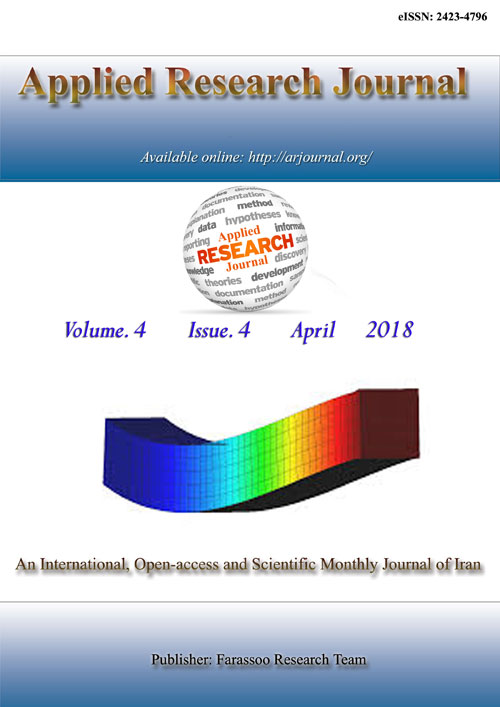فهرست مطالب
Applied Research Journal
Volume:3 Issue: 12, Dec 2016
- تاریخ انتشار: 1396/10/10
- تعداد عناوین: 3
-
Pages 354-364Collapsible soil is known as problematic soil, which possess considerable strength when dry and loses its strength when submerge experiencing excessive settlements. The collapse potential increases with time due to soaking and leaching which is attributed to the dissolution and washing out of gypsum. In this paper, a embankment of granular sub - bas with (2 m, 3 m, 4 m) height and side slope equal (1:1.5), (1:1), and (1:0.75) respectively, is assumed to be constructed on gypsouse soil with dimensions (20 m) in width and (10 m) in height. A footing with width equal to (2 m) was placed in position on the surface of the embankment. The problem was analyzed for each embankment at different water table levels from the ground surface (at surface, 2m, 5m and at b ottom), by the finite element program Giostudio (SIGMA/W). It is noticed that the bearing capacity of the footing decreases with decrease of the water table depth due to the dissolution of the cementing gypsum causing high softening of soil and the colla pse potential increases when the water content of the soil increases due to the dissolution of cementing gypsum which is accompanied by collapse of soil structure. A mathematic relationship was determined between the collapse potential and the height of embankment and water table depth, and anther mathematical relationship was obtained between the bearing capacity and the height of the embankment.Keywords: Gypseous Soil, Collapse Potential, Embankment, Finite Elements
-
Pages 365-375The present study aims to investigate the effect of repeated extrusion cycles on both the structure an d properties of high density polyethylene matrix composites reinforced with olive husk flour (OHF). The mixture was prepared by twin - screw extrusion. Part of the extrudate was injected to make dumb - bell shaped samples for the analysis while the other part was repeatedly recycled. To reduce the hydrophilic nature of the husk flour, a compatibilizer agent, namely Polyethylene - graft - maleic anhydride (PE - g - MA) was used. The specimens obtained after each cycles were subjected to a series of tests: microscopic, F TIR spectroscopy, water absorption and melt flow index. The results show that the physical mechanical properties of the composites treated with a compatibilizer agent have not been significantly affected by the recycling compared to virgin matrix, whi ch ex perienced some degradation.Keywords: Recycling, Biocomposites, Olive hush flour, Mechanical properties
-
Pages 376-384Culture and architectural monuments play an important role in preserving the national heritage and therefore it is considered a treasure for any country that possesses it because of its social, tourist, religious and economic importance. These facilities may be subject to the effects and changes in shape, color and material as a result of weather, natural disasters and acts of vandalism resulting from human activity. Therefore, preserving this kind of nations treasure is important matter of all governmental and private institutions that interacting with this subject. Close range photogrammetry represents one of the most accurate and low cost techniques used for 3D documentation. It should be noted that there are several strategies used in photogrammetric technique, including using of one image to have twodimensional data, or the use of multiple images to obtain 3D data about the object, which is the situation that interests us in our research. In this paper two case studies have been selected; the first study area is representing an important historical area of the Iraqi culture heritage (Tell Harmel) and the second study area is a famous architectural monument that have an important meaning to the Iraqis today (salvation the culture in Iraq). The paper is focusing on using low-cost digital cameras to preserve these areas following an automatic routine for documentation based on close-range photogrammetry technique and bundle block adjustment mathematical model. Two smartphones (iPhone 6, HTC m8) was used to investigate the feasibility of using them in producing accurate 3D models following structure from motion (SFM) algorithm. The results have been analyzed and investigated to show the feasibility of these devices to document cultural heritage and architecture monuments. Accuracy comparison was demonstrated with more accurate routine using DSLR camera (Canon 5D mark3) to show robustness. Further, a validation process was applied with reference targets following statistical analysis which show a very promising results and outcomes.Keywords: Photogrammetry, Close-Range Photogrammetry, Conservation, Architect, Cultural Heritage


